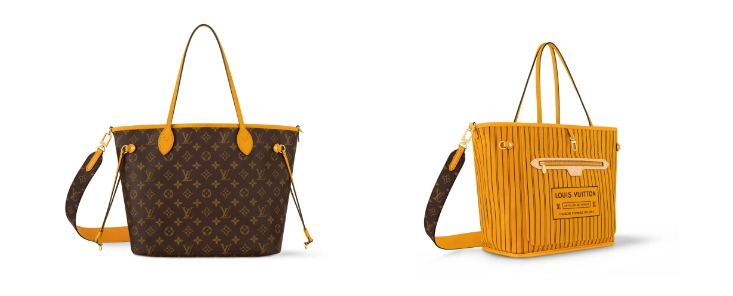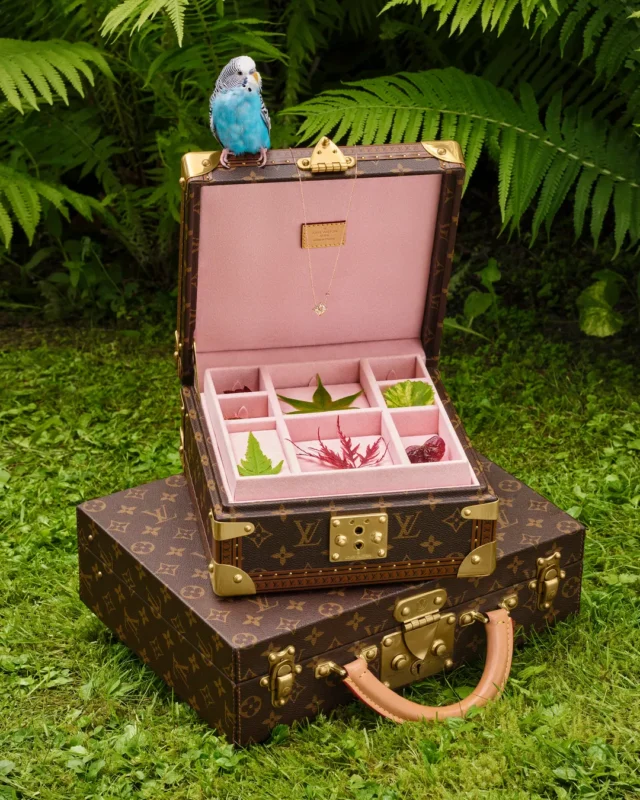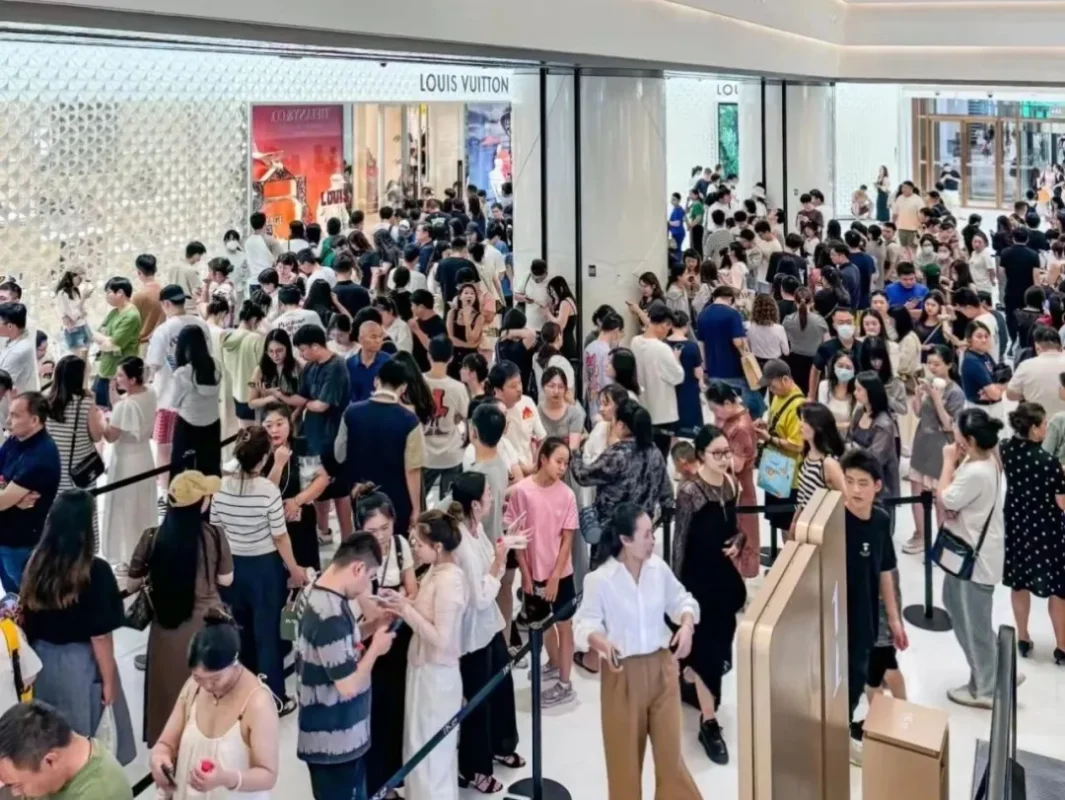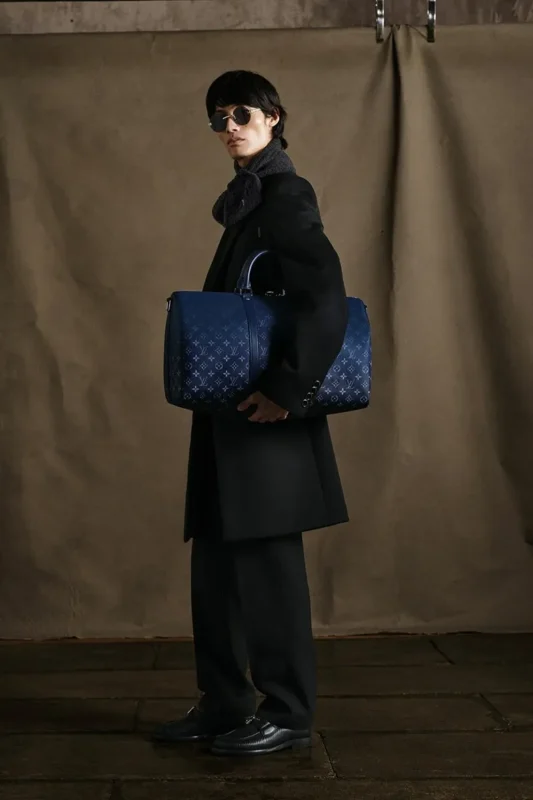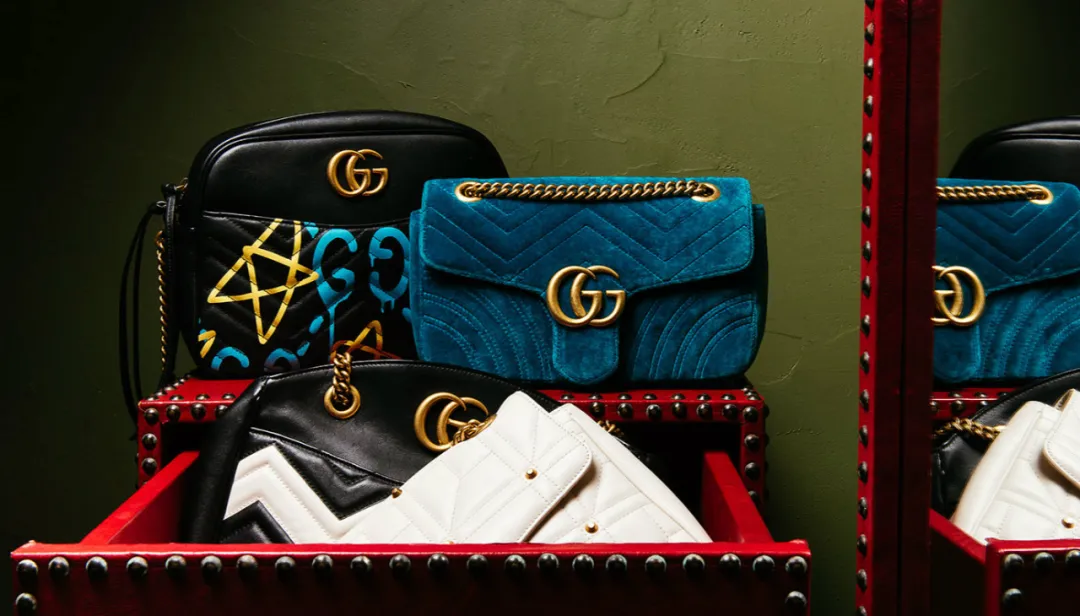The five years in the fashion industry seem like a century, enough to reverse the magnetic poles.
The first men’s clothing collection released by the late designer Virgil Abloh on Louis Vuitton in the summer of 2018 is still vividly remembered. A series of fluorescent color series new products under the sunshine, with a distinct attitude, tear open a gap in the classic and conservative luxury goods industry, making the gaps in the screen shine brightly and the crowd boil.
The news that LV, the world’s largest luxury brand, has seen its first black creative director rise to power in nearly two hundred years, is enough to shake the market, but more importantly, this decision comes from the Arnault family in France, known for its adherence to tradition, a family rumored to wear suits in every occasion, place great emphasis on family education and classical music inheritance.
In 2018, when the topic of new money and old money was not yet lively, LV has clearly stated that the brand represents the new rich of the times, not traditional old money. The inauguration of Virgil Abloh is a reflection of the rise of new elites.
During this period, issues of racial diversity and gender equality swept across the world like a torrent, and LVMH Chairman Bernard Arnault, who smelled the scent, also decided to comply. A few more years ago, Bernard Arnault just appointed Maria Grazia Chiuri, the brand’s first female creative director, for his personal favorite Dior.
The passing of Virgil Abloh in 2021 was unexpected, but history often goes hand in hand with drama. With Virgil Abloh’s sudden departure, the times have also taken a turn.
Last night, LV officially entered a new chapter led by Pharrell Williams, a musician, trendy idol, and brand’s new creative director for men’s clothing. When LV announced the candidate for the men’s creative director four months ago, one view was that LV was continuing to explore certain extremes.
After Virgil Abloh, Pharrell Williams, as the second black creative director in brand history, has also not received any formal education in high-end fashion design. Both of them have strong public appeal and can create entertainment topics for the brand with ease.
Compared to Virgil Abloh, who founded the fashion brand Off White, Pharrell Williams has many connections with haute couture, but his personal brands Billionaire Boys Club and Ice Cream mainly focus on trendy clothing, with the support of his friend Nigo.
In fact, just as Virgil Abloh had a gathering of top ranked people five years ago, last night’s LV 2024 spring/summer men’s fashion show was a bigger carnival.
Celebrities such as pop stars Jay Z and Beyonce, Rihanna and Asap Rocky, brand new spokesperson Zendaya, supermodel Naomi Campbell, adidas CEO Bjorn Bulden, Kenzo Creative Director Nigo, and football star James attended the fashion show. The performance of Chinese pianist Lang Lang and the performance of Virginia Gospel Choir ignited the atmosphere on site. Pharrell personally performed with Jay Z in a choir after the show.
Everything looks like a continuation and amplification.
Pharrell opened a new social media account @ Skateboard the day before his debut, specifically documenting his experience as the creative director of LV men’s clothing. Using his nickname Skateboard P, Pharrell disclosed a series of behind the scenes anecdotes and creative production processes in advance.
Some comments suggest that it is fortunate that Pharrell was able to continue the methodology established by Virgil Abloh, which is equal communication and open creation, distributing credit to the entire team behind the celebrity creative director.
In a media interview before the show, Pharrell also bluntly stated, “I position myself as a student who is always learning. You can see my series as a student assignment. Just like doing music, I am sharing my learning achievements.”
Pharrell constantly emphasizes that he is currently experiencing the most unique and grand learning experience of his life. This learning opportunity seems overly luxurious to the outside world, and people won’t blame him for his amateur work, because since his appointment, people seem to no longer expect the creative director to bring stunning fashion, but only entertainment and culture.
Nowadays, the market has become accustomed to monitoring creativity as the brand’s image spokesperson and marketing promoter, rather than the person who makes clothes.
However, the question is, is Pharrell only bringing entertainment effects, or is it a higher dimension of cultural influence? Is he an extension of Virgil Abloh strategically? Continuing to delve deeper into this question brings a completely counterintuitive answer.
Regardless of whether people admit it or not, the golden period of Pharrell’s personal influence was in the 2000s and 2010s, whether in the music or fashion fields.
In the 1990s, Pharrell and Chad Hugo began their career as music producers under the name of The Neptunes. In 2006, Pharrell released his first solo studio album, and in 2013, he won countless chart topping titles with the song “Happy” from “Thief Dad 2”, marking the pinnacle of his music career.
In 2000, Japanese designer Nigo met Pharrell through the jeweler Jacob&Co., who brought his fashion brand Bape to North America, to some extent promoting the integration of Japanese fashion and American fashion. In 2005, Pharrell and Nigo co founded Billionaire Boys Club and the trendy brand Ice Cream.
This is a period for skateboarding enthusiast Pharrell to expand his influence in the trend field. Subsequently, he gained the attention of luxury brands with his unique fashion taste. With this transformation, Pharrell’s influence audience has quietly changed.
In 2008, Pharrell and then LV Creative Director Marc Jacobs jointly launched a series of jewelry and sunglasses items. In 2017, Pharrell, who befriended Chanel’s former creative director Karl Lagerfeld, became the first male spokesperson for Chanel handbags and filmed a Gabrielle handbag blockbuster.
In 2019, Chanel even launched an official co branded series with Pharrell, which is rare in the history of Chanel brands that have not yet established a men’s clothing business. After disclosing last year’s financial report last month, Chanel CEO Leena Nair reiterated that she will not expand into the men’s clothing category.
In 2014, Pharrell reached a long-term cooperation agreement with adidas, becoming the longest standing pillar of the adidas camp after Kanye West. Throughout his ten-year collaboration with adidas, Pharrell’s role has gradually shifted from a trendy idol to a cultural symbol.
It can be said that at least five years ago, Pharrell had become one of the few fashion idols in the world who simultaneously influenced trends, luxury goods, and sports brands.
However, in the fashion revolution supported by Kanye West and others in the past five years, Pharrell, along with the 2010s fashion he had deeply participated in, entered a period of mediocrity. Although fashion in the 2010s has not yet formed a clear definition, some representative brands and items almost summarize the commonalities of this stage, which is the simplest and intuitive expression brought about by the first collision between street and luxury. This to some extent leads people to believe that this stage represents an unforgettable vulgarity and superficiality.
For example, the dark gothic Givenchy under Riccardo Tisci, Christian Louboutin studded with rivets, knee length Hood By Air, Giuseppe Zanotti with metal shoe buckles, and even the fusion of Harajuku and Hong Kong culture in Bape, VLONE, are street fashion items with a strong 2010s color.
The fashion trends of the past five years have become more minimalist and low-key, eliminating the flamboyant trend of wearing gold and silver. In the eyes of young and trendy consumers, Pharrell, who is recognized by luxury brands, is undoubtedly a respected veteran idol. However, his name no longer represents a guaranteed sales rate and secondary market price. Instead, he is replaced by new names such as Kanye West, Jerry Lorenzo, Virgil Abloh from the Nike camp, Travis Scott, and others who excel in creating “Hype” gimmicks.
From here, it can be seen that the difference between LV’s appointment of Virgil Abloh and Pharrell is that the former is in a period of rising traffic when accepting the appointment, while Pharrell, who is one era apart, is already in a period of sedimentation.
Virgil Abloh urgently needs to gain fashion recognition, while Pharrell clearly enjoys the party itself more. In fact, as the earliest celebrity to gain recognition in the luxury goods industry, Pharrell had already gone through everything before Virgil Abloh vigorously wrote the story of ethnic minorities fighting in the fashion industry. However, he never chose this as the focus of his personal narrative, and the macro environment at that time was not the same.
Pharrell is an insider who has integrated into the system in advance, bringing symbols instead of traffic.
Upon careful examination, we were surprised to find that LV did not go further on the same line from Virgil Abloh to Pharrell, but rather ran back and forth, returning to ten years ago.
That’s why when we look back at what may be the least important part of this debut, the clothing itself, we get a vivid impression. This series does not lack outstanding styling, but industry critics unanimously point out that this new series is more about this and that, using Pharrell’s personal style, Virgil Abloh’s legacy elements, Nigo’s methods, and LV brand classic elements to piece together a debut series.
At the beginning, the almost trendy camouflage, suit shorts set, consistently excellent eyewear design, pearl strap handbag, beret and Lei Feng hat, and other diverse headgear, as well as the free flow of men’s and women’s clothing design elements, are all distinct personal elements that Pharrell has been persisting in since 2000.
Compared to the more mature and business looking Damier checkerboard display on Monogram, the proportion of sneakers has significantly decreased. The bright colored Speedy handbag that became popular among American celebrities between the millennium and 2010 has brought people back to an era where both flamboyance and introversion are emphasized, and street and luxury are on par.
Nothing is more flamboyant than a jacket covered in Monogram vintage flowers, but compared to the print designs from the Virgil Abloh era, it is no less classic and understated.
That’s right, everyone has experienced the era that Pharrell brought back. People used to think it was too close to being retro and nostalgic, and according to the cyclical pattern of fashion, products from the previous fashion cycle were always considered tacky and unbearable, but now they have turned the tide.
But beyond the creativity that consumers are concerned about, Bernard Arnault’s plan is more worth pondering.
Beyond the entertainment and cultural aspects, the compromise expression brought by Pharrell marks the return of brand value and the recalibration of customer focus. With the contraction of the macro environment, the resurgence of traditional forces, and the rapid decay of street culture, Virgil Abloh’s story of awakening the new rich has proven to be only a brief chapter. Pharrell brings a balance between the new rich and the old money, the street and the classics.
The traditional affluent customers who were willing to offend five years ago have proven their strong position after the epidemic. These so-called “old money” with less impact on their wealth, along with the popular TV series “War of Inheritance” and Quiet Luxury’s quiet luxury trend, have once again become objects of appeal for luxury brands.
Last year, LV officially broke the annual revenue milestone of 20 billion euros. Feiran’s achievements have two sides. After breaking through the scale milestone with the help of the new rich, this world’s largest luxury brand clearly needs to readjust its balance, and every move will attract close attention from the industry.
Compared to Virgil Abloh’s debut under the scorching sun, Pharrell’s performance waited for the sunset to set until nightfall before opening.
Under the frenzy, the atmosphere changed.


